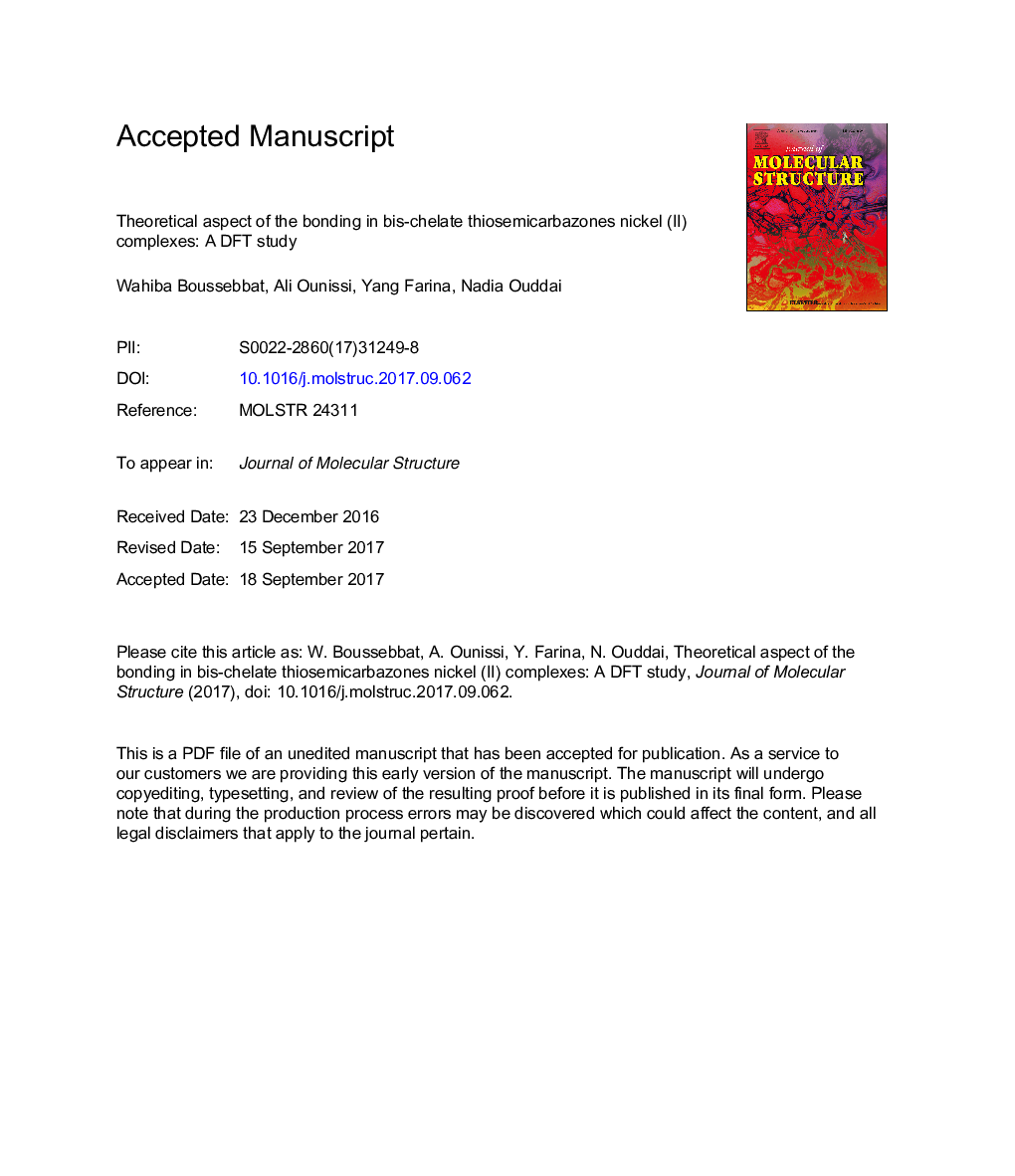| Article ID | Journal | Published Year | Pages | File Type |
|---|---|---|---|---|
| 7808984 | Journal of Molecular Structure | 2018 | 29 Pages |
Abstract
The calculations were performed using the density functional theory (DFT) at the PW91/TZP level. The nature of the nickel-ligand bonding in these low-spin complexes and ofthegeneral formulaNi [Ln]2 (n = 1-9), was analyzed. The contributions of electrostatic and covalent interactions to the Ni-Ln bonds are estimated by analyzing the energy decomposition. The covalent bond follows the Dewar-Chatt-Ducanson model; the explanation is provided by the orbital pattern highlighting the electronic donation-retrodonation. The AIM analysis, by means of the electronic density values, confirms the presence of weak intramolecular hydrogen interactions. The absence of the biological activity in the two complexes, Ni [L5]2 and Ni [L9]2, can be correlated to a geometric descriptor quantified by the topological distortion.
Related Topics
Physical Sciences and Engineering
Chemistry
Organic Chemistry
Authors
Wahiba Boussebbat, Ali Ounissi, Yang Farina, Nadia Ouddai,
